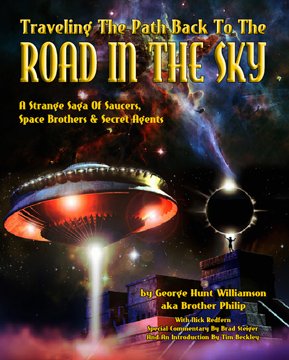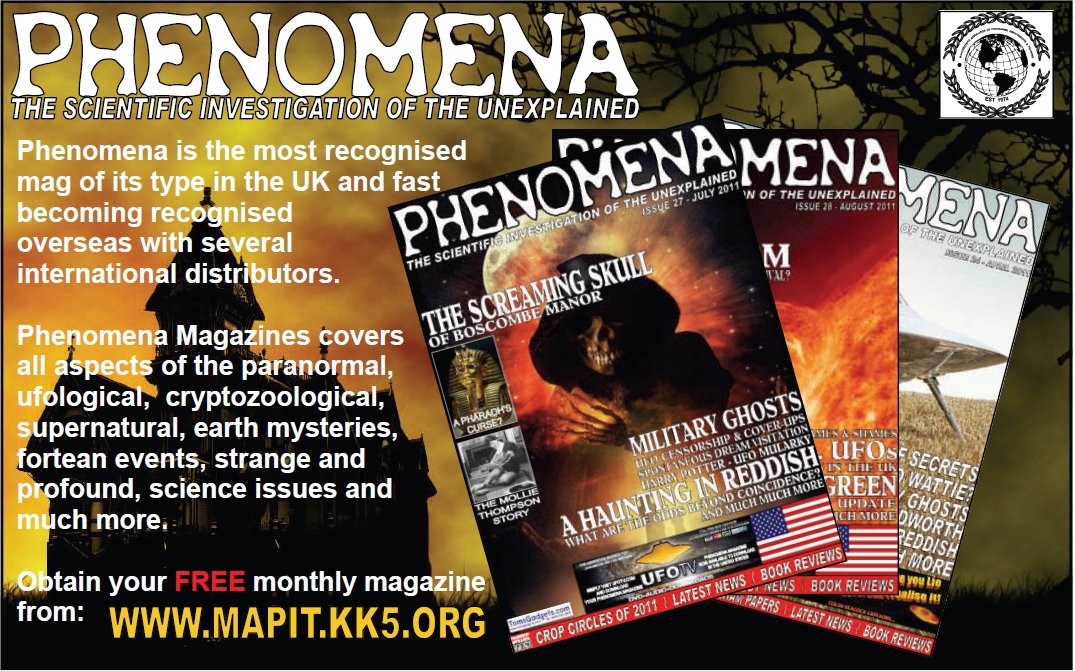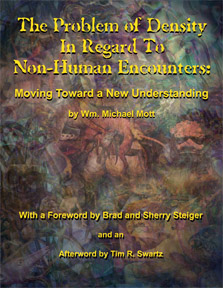|

4/20/14
#769
http://www.conspiracyjournal.com
Subscribe for free at our subscription page:
http://www.members.tripod.com/uforeview/subscribe.html
You can view this newsletter online at:
https://uforeview.tripod.com/conspiracyjournal769.html
It doesn't matter if
you lock
your doors and throw away the keys - THEY know you are
home! Got a
computer? THEY know you are online! And THEY know that
you have just
received another brain-crunching issue of the weekly
newsletter of all
the weird stuff and conspiracies that THEY DON'T WANT
YOU TO KNOW - THE
CONSPIRACY JOURNAL! So read it quickly before THEY
come knocking on
your door to take you away! Information is POWER!
This
week Conspiracy Journal
brings you such creature-feature stories as:
- New
Photo of Unknown Aircraft over Kansas -
- Apple Maps
Satellite Image Shows 'Something' at Loch Ness
-
- The Remarkable
Odyssey of Journeyman Paranormal Writer Tim R.
Swartz -
-'Magnetic Boy' Keeps
Crashing Computers -
AND: Easter
Eggs, Bunnies, Peeps: Easter
Traditions Explained
All these exciting stories and MORE
in this week's issue of
CONSPIRACY JOURNAL!
~ And Now, On With The Show! ~
From
the Days of UFOs Past - This Fantastic
Book!
A STRANGE SAGA OF SAUCERS, SPACE
BROTHERS, SECRET AGENTS AND ALIEN ASTRONAUTS
THROUGHOUT ANTIQUITY
George Hunt Williamson –
known as “Brother Philip” throughout the
highlands of Peru, the jungles of South and
Central America, and the arid plains of the
Southwest – traveled the longest highway in
the world, leading him to discover a vast road
into the sky that can be linked to the arrival
of visitors from elsewhere in the universe
throughout the ages.
Within these pages are the stories of the
Hopi Sun Clan, including the legends of the
“Giant Star.” The secret of the Stone Tablets
of Peru. The Time Spanners. The Beacon of the
Gods. The Martian Miniatures. Fossils,
Footprints and Fantasy. Evidence for the
existence of the “Silent World,” and the
reality of the Unholy Six.
Also this is the book that gives:
* Williamson’s behind-the-scenes battle
with the FBI and the Silence Group.
* His investigation into the mysterious
disappearances of Hunrath and Wilkinson, who
might have been murdered or abducted by UFOs.
* The accusations of smuggling and his
“association” with a sexy flying saucer pilot
whom the FBI identified as a “ravishing woman
commandant!”
Williamson, sometime in his life, must have
come to realize that, in America, if you try
to buck the status quo or change the system
you can easily be slandered and identified as
a dangerous dissident, whether you are called
a communist, a fascist, or a neo-Nazi.
Many of the contactees of the early UFO/New
Age communities were unduly slandered, as was
the man aka “Brother Philip.” It was also
suggested that Williamson was a
“Mind-Controlled Soldier” of the Soviet Union,
a label he found difficult to shake off during
his years of battling with the “system.” How
he persevered in spite of all this undeserved
conflict makes for a story of true UFO
heroism.
For
subscribers of the Conspiracy Journal Newsletter
this book is on sale for the special price of
only $18.95 (plus
$5.00 shipping). This offer will not
last long so ORDER TODAY!
You can also
phone in your credit card orders to Global
Communications
24-hour hotline: 732-602-3407
And as always you
can send a check or money order to:
Timothy Green Beckley
P.O. Box 753
New Brunswick, NJ 08903
- MORE SECRET BLACK PROJECTS -
New Photo of Unknown Aircraft over
Kansas
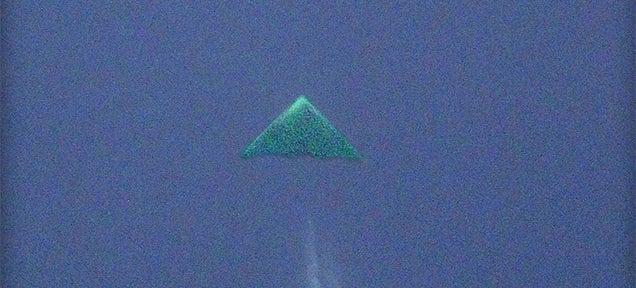
A new photo of a mysterious flying object over
Kansas has been revealed. It appears to be the
same aircraft as one that was snapped soaring
over Texas recently.
The exact identify of the aircraft remains a
mystery, but rumours abound that it could be a
secret jet.
'The photo is grainy because it was taken with
a hand-held maxed-out 400mm telephoto lens
through a cloud layer and then it was severely
cropped to bring it up even close,' says Jeff
Templin, who took the photo on 16 April.
'There is no way to know the altitude and no
way to judge its size as there is no point of
reference.
'My sense of it with the naked eye was that it
was quite high, at least the altitude
passenger jets cruise over but if it were
smaller like a "drone" it could conceivably
have been lower and smaller.'
The Aviationist speculates that the plane
could be a RQ-180 stealth drone or a prototype
of America's next generation long range strike
bomber (LSRB).
They, too, are unsure if it is the same plane
as the one spotted previously
A retired Marine with nearly two decades of
aviation experience stepped forward with a
compelling theory about the mysterious plane
that was spotted flying over Texas last month.
On March 10, photographers Steve Douglass and
Dean Muskett took pictures of three puzzling
aircraft flying over Amarillo, and posted them
online in hopes of identifying the planes.
Retired-Marine James Vineyard submitted one of
the more interesting explanations, telling the
Houston Chronicle he believed they were SR-72
Blackbirds - a spy plane that can cross the
U.S. in less than an hour, unmanned.
Vineyard spent 17 years as a Marine and also
worked with a jet squadron in Arizona.
He says the Pentagon may have dispatched the
planes to the Indian Ocean to aide in the
search for missing Malaysian Airlines flight
370.
But Douglass, who saw the planes himself,
doesn't agree.
'The SR-72 is still in development,' he said
Tuesday. 'Plus it's a high-speed, high-Mach
plane. These were going airliner speed. They
were not in a hurry to get anywhere.'
The SR-72 is currently being developed by
Lockheed Martin in California, and according
to the company's website they say the plane
could be operational as early as 2030.
It is the predecessor of the SR-71 which broke
speed records when it flew from New York to
Lonton in less than two hours in 1976.
Lockheed Martin's Hypersonics program manager
Brad Leland wrote that the plane is designed
to 'strike at nearly any location across a
continent in less than an hour.'
'Speed is the next aviation advancement to
counter emerging threats in the next several
decades. The technology would be a
game-changer in theater, similar to how
stealth is changing the battlespace today,'
Leland said.
Another reader, who wished not to be
identified, told the Chronicle with confidence
that 'It's a B-2 stealth bomber flying out of
Whiteman Air Force Base in Missouri.'
That's what the photographers thought when
they first saw the group of aircraft, but they
say they checked with the base and no B-2s
were flying anywhere in the U.S. that day.
Instead, Douglass believes that the planes are
a no type of spy plane - a stealth transport
plane that could sneak troops into a another
country unseen.
Source: The Daily Mail
http://www.dailymail.co.uk/sciencetech/article-2607840/Is-THIS-SR-72-spy-plane-Mystery-aircraft-spotted-flying-Kansas-just-weeks-seen-Texas.html
- SMILE FOR
THE SATELLITE DEPARTMENT -
Apple Maps Satellite Image Shows
'Something' at Loch Ness

State of the
art sonar equipment, a yellow submarine
and even a white witch have all been used
to try to find the elusive Loch Ness
Monster.
But it seems all you really need
to track Nessie down is an IPHONE.
Mysterious images taken from space
are making waves with Nessie fans – as
they appear to show a creature swimming in
the world’s most famous loch.
The pictures were captured
separately by two amateur hunters, Peter
Thain and Andy Dixon, as they used an
iPhone satellite map app.
It had been feared the 1,500-year
legend was over after 18 months without a
recognised sighting, but now enthusiasts’
hopes have been raised again.
Andy, of County Durham, said: “It
was by accident I came across it. I could
see something big under the water and I
saved it to my phone. My first thought was
that it was the monster.”
It could only be seen on Apple
products but has been probed by the
Official Loch Ness Monster Fan Club.
President Gary Campbell said: “It cannot
be a boat as there is no hull. It’s just
below the surface – the size would make it
likely to be Nessie.”
William Hill offers a £1,000
annual prize for the best sighting of
Nessie – which has been spotted 1,036
times since 565AD. The award is worth
double this year as it went unclaimed in
2013.
Gary said: “After Nessie ‘going
missing’ for 18 months, it’s great to see
her back.”
Due to the lack of sightings last
year, bookmakers William Hill who offers a
£1000 annual prize for the best Nessie
sighting is doubling this year incentive
because it went unclaimed last year.
Nessie was first spotted in 565AD
and has been seen 1036 times in the last
1500 years.
All the sightings are listed at
www.lochnesssightings.com
Three sightings were reported in
2013 but they were discounted as fakes.
One was a wave, another a duck and
the third a picture not even taken on Loch
Ness.
It was the first time since 1925
that there had been no confirmed reports
of the monster.
White Witch Kevin Carlyon, who
believes Nessie is a ghost, frequently
casts spells on the loch and will return
this summer.
Actor Charlie Sheen also plans a
return visit with American TV host Jay
Leno after revealing last year that he
went hunting for Nessie – with a bottle of
whisky.
Source: Mirror
http://www.mirror.co.uk/news/weird-news/loch-ness-monster-spotted-satellite-3428130
- GUEST AUTHOR
DEPARTMENT -
The Remarkable Odyssey of Journeyman
Paranormal Writer Tim R. Swartz
By Sean Casteel

Tim R. Swartz has had a long career in the
field of paranormal journalism. One might call
him a “journeyman” of sorts, covering diverse
topics such as UFOs, Nikola Tesla, ghosts and
hauntings – the list goes on – and chipping
away at those imposing boulders of mystery
without much fanfare. It is in some ways a
lonely struggle, but it has always had its
rewards.
Swartz is the author of the book “The Lost
Journals of Nikola Tesla,” for instance, which
has become a bestseller for his publisher,
Global Communications. He has been on the
scene for a poltergeist haunting that also
included a verifiable teleportation event. He
has edited the online publication “The
Conspiracy Journal” for many years, helping to
inform interested readers of the latest
machinations of the “shadow government,”
which, Swartz believes, has already taken
control of the world in the name of a small
elite group who continue to remain ominously
concealed.
It all began for Swartz, as with most people
in this field, in childhood. As Swartz
recalls, it was sometime around 1968 and he
was in the third grade. Studying a publication
called “My Weekly Reader,” distributed by
Scholastic Book Services, was part of the
curriculum at Swartz’s school. “My Weekly
Reader” was a small newspaper-type
publication, written for children, which kept
up with current events in the U.S. and
throughout the world. Swartz and his fellow
students were required to make a written and
oral report on one of the news articles in the
newspaper.
There was a UFO flap taking place in the U.S.
at the time, and Swartz was asked to do a
report on “My Weekly Reader’s” coverage of the
sightings wave.
“Up until that point, I had never really even
heard or thought too much about UFOs or the
paranormal,” Swartz said. “I did my report as
best I could at that age, and from that day on
in school I was dubbed ‘the flying saucer
guy,’ the guy who believed in little green
men. I really wasn’t interested in that kind
of stuff, but you know how things get thrust
upon you as a kid.”
While many of the kids made fun of Swartz to
his face about it, some of them would approach
him later with personal stories of UFO
sightings or ghosts in their homes, stories
they asked Swartz not to share with other
people.
“That’s what really got me interested in it,”
Swartz explained. “Not so much the media
reports and things like that about UFOs. But
it was the personal angle that got me going.
It was the fact that these people would just
come to me. They weren’t interested in telling
anybody else or contacting the newspaper or
anything like that. They wanted a sympathetic
ear to hear their story. They wanted
confirmation that they really did see
something and that they weren’t crazy.”
They also wanted confidentiality, Swartz said,
because even then there was a forbidding
“giggle factor” attached to such subjects,
which continues to prevail, making
experiencers throughout the world loathe to
talk about what has happened to them.
Swartz said he has had only one possible
sighting experience himself. One night, as an
adult, he saw a bright, red, stationary light
to the southwest that was visible from the
back door of his home in Jasper, Indiana.
There was an airport about 70 miles away in
that same direction, but he was familiar with
jets and their landing and maneuvering lights,
and he was confident that this was something
different. The red light he was observing went
out suddenly, and he remained watching too see
if a plane would fly overhead from that
direction but never saw anything.
“So take it as you will,” he said. “I can’t
really say it was a UFO. I didn’t know what it
was. Unfortunately, when it comes to UFOs,
that’s been my only experience.”
While earning a bachelor’s degree in broadcast
technology with a minor in journalism at
Vincennes University in his native Indiana,
Swartz was already working at a television
station in Terra Haute. He would go on to win
several Emmy Awards, mostly in the technical
field, for editing and producing various news
segments. For example, while employed at the
PBS station in Indianapolis, he worked on a
Halloween episode for a program called “Across
Indiana.” Swartz’s segment on local ghost
stories was singled out by the judges when the
entire program won an Emmy.
The first time Swartz heard the name “Nikola
Tesla,” he was working for a television
station in Dayton, Ohio. The legendary
Wright-Patterson Air Force Base, which
according to UFO lore houses the dead alien
bodies recovered from the Roswell crash, among
other things, is close to Dayton.
“One of the weekly assignments my producer and
I had,” Swartz recalled, “was to go to
Wright-Patterson and talk to the press liaison
there just to see if there were any
interesting stories we could do. The press
liaison would go through his files to see what
was available for the local press. I remember
one day he was going through his files looking
for some stories and he just made an offhand
comment that they were doing some work there
about which they couldn’t release any
information to the press at that time, but
maybe later. And he said, ‘work based on that
mad scientist, Nikola Tesla.’ And then that
was it. He went on to other stuff.”
In spite of how the press liaison had only
casually mentioned Tesla, the name stuck with
Swartz. He found the mere sound of Tesla’s
name to be “exotic,” and he was further
intrigued that Tesla had been labeled a “mad
scientist.” Swartz would eventually be
employed by Timothy Green Beckley, the CEO of
Global Communications and the editor of
several paranormal-related publications.
Beckley and Swartz were kicking around some
ideas for possible books one day, and Swartz
suggested he try to write something about
Tesla.
“Here’s somebody you don’t hear very much
about,” Swartz told Beckley, “yet allegedly he
contributed so much to modern technology. I’d
like to do some research and see if there’s
anything that would be worth writing a book
about.”
Beckley gave the book proposal his blessing,
and Swartz began his research into Tesla,
though at the time, around 1998, there was
scant material available. But then something
serendipitous happened. Beckley received a
letter from the late Jim Keith, another
paranormal journalist who had written a number
of conspiracy-based books. Keith wrote that he
had been approached by a book buyer in New
Jersey named Dale Alfrey, who had unknowingly
purchased some of Tesla’s old papers and
notes. Keith had little interest in the
material and had passed the information on to
Beckley, who then forwarded it to Swartz.
“It was fortuitous,” Swartz said, “that at the
time I had only started doing the research on
a possible book about Tesla.”
Swartz contacted Alfrey and began to learn
further details of the book buyer’s story.
“He had bought a couple of boxes of old books
from an estate sale,” Swartz recounted, “and
in one of these boxes, underneath these books,
he found a lot of old paperwork and journals
that were from Tesla. Like a lot of people at
the time, he had no idea who Tesla was.
Nevertheless, he started reading it and got
interested in what he was reading. So he
started compiling what he was reading onto old
floppy disks. More and more, he came to
realize this was pretty unique material.”
Swartz said it is now known that Tesla was not
much of a journal-keeper. Tesla had the rather
unique ability to visualize his inventions and
experiments in his head completely and without
needing to put those ideas down on paper. He
would convey his ideas to his assistants,
whose job would then be to construct whatever
device or set up any experiment that was asked
of them as well as to write down certain
details when necessary.
In any case, Alfrey posted on an Internet
forum that he had found this material by
Tesla, whom he knew nothing about, and
inquired whether anyone out there knew who
Tesla was and if the material was worth
anything. That was Alfrey’s primary interest:
were the papers valuable and was there any
money to be made by selling them? Shortly
thereafter, he received a rather unsettling
visit at his front door by two men, similar,
according to Swartz, to the familiar
Men-In-Black of UFO legend.
“I don’t think they were dressed in black,”
Swartz said, “but they looked almost like
federal agents. They were very clean cut,
wearing suits and ties, sunglasses, the whole
nine yards. They started inquiring about this
material. Whether or not he still had it.
Whether or not it was there. If he knew who
Tesla was, all of that. He didn’t suspect
anything. He just talked to them like he would
anybody else.”
After a while, the two men thanked him for his
help and left. Alfery reported to Swartz that
he had felt comfortable throughout the
interrogation, oddly enough, and was unaware
that anything nefarious was going on. Alfrey
next went into the office in another room of
his house and found that all of his floppy
disks had been stolen and his back door was
unlocked. Someone had obviously come in
through the back door while he was talking to
the two men. Not only were the floppy disks
gone, but the relevant material had also been
erased from the hard drive in his computer.
Nothing else was taken, and none of his stuff
had been rifled through.
“It was as though these guys knew exactly
where to go,” Swartz said, “what to take, and
what to remove from his hard drive. Alfrey
told me he wasn’t a computer genius, but he
knew enough to check if his deleted files
could be recovered. He couldn’t find any
evidence that those deleted files had ever
been on his computer at all. Whoever had
deleted them had done an expert job. That’s
when he started looking more into the subject
and ran across Jim Keith’s name and wrote to
him, which is how the story eventually came to
me.”
Alfrey had had no prior experience with any of
this, of course, and knew nothing about the
dark side where the Men-In-Black and
disinformation agents lurk. He asked Swartz,
“Have you ever heard about anything like this
before? Do government agents come and steal
from American citizens? Why are they
interested in this?” Swartz said he could not
offer much to Alfrey in the way of helpful
information in that regard.
However, as he continued researching Tesla,
Swartz did learn that something similar had
happened shortly after Tesla died in 1943. The
United States government swooped in and took
everything its agents could get their hands on
from Tesla’s apartment and from his former
residences as well.
“You have to understand,” Swartz explained,
“that at the time Tesla passed away he was
basically broke. The only way he was surviving
was through monetary gifts from his friends.
And when he would get low on funds, he would
have to move to another place. He always lived
in hotels there in Manhattan. Several times,
when he had to leave these places, he also had
to leave behind his possessions, which the
hotels would use as collateral in lieu of him
not being able to pay his bills. If he came
back and paid his bills, he could get his
possessions back.”
Swartz said that he suspects that a lot of
Tesla’s material was sold by these hotels
years later. They would run across the papers
while cleaning out their basements, for
example, and, not knowing what it was, would
sell it to paper buyers or other merchants.
Thus the material would end up in the hands of
others.
“I think the military was most likely
monitoring any kind of media outlet,” Swartz
said, “the early Internet, things like that,
for any Tesla material, in order to swoop in
and grab whatever they had missed. I do know
that a lot of the material they took directly
from Tesla’s estate after he died ended up at
Wright-Patterson Air Force Base.”
Which is, of course, where Swartz first heard
Tesla’s name while still a young television
station employee. The pattern of coincidences
and lucky happenstance that led to Swartz’s
“The Lost Journals of Nikola Tesla” is readily
apparent. As was mentioned, earlier, the book
is still a bestseller for publisher Global
Communications, well worth buying and reading
for those who have not previously done so.
Swartz’s book’s continued impressive sales
testify eloquently to the fact that Tesla’s
hold on the collective imagination shows no
signs of weakening, and Swartz also marvels
that, as much time as he has devoted to the
study of the legendary inventor, new
information on Tesla still emerges all the
time.
“I think Tesla still holds a fascination for
people,” Swartz said, “because he was such a
genius in his day. He went from being a
publicly honored figure to being an eccentric
hermit, desolate, broke, and referred to as a
‘mad scientist.’ Here we have a guy who
created the AC motor, the thing that really
helped propel our world into the 20th and 21st
century and was part of creating our
electronic age. Not just the AC motor, but all
kinds of things: radio, remote control,
robotics. Tesla even had his own Unified Field
Theory on how the universe works. To go from
somebody like that to somebody who was
considered a crank, a nut job – that alone
fascinates people.
“But then you also have a scientist,” Swartz
continued, “who was so advanced, so ahead of
his time in his thinking. We still haven’t
caught up in understanding a lot of the things
that he was experimenting with and conceiving.
This was a guy that up until the day he died
was still coming up with new ideas and
theories. He may not have had the money to
have a laboratory to conduct experiments any
longer, but he was still coming up with things
and registering new patents. His last patent
was for a helicopter-like device.”
As far back as the late 19th century,
according to Swartz, Tesla was looking for a
method to transmit electrical energy
wirelessly, and by the early 20th century was
very close to reaching his goal.
“This is a technology we still don’t have
today,” Swartz said, “at least in the public
arena. I daresay there are military or
government scientists who have a better
understanding of what Tesla was trying to do
and maybe are well aware of this technology
and how it’s used. But it’s not available to
the public because that would have devastating
consequences on the way our whole economic
system operates.”
On the issue of the UFO presence, Swartz has
no doubts that the phenomenon is real and
utterly amazing.
“It seems to almost have an intelligence of
its own,” Swartz said, “in the sense of being
able to detect when people are interested in
it. It’s almost like the old saying, ‘When you
look at it, it looks back at you.’ But the ET
hypothesis, is probably too simplistic. It
could very well be that at some aspects of the
UFO phenomenon do represent physical
nuts-and-bolts spaceships from other planets.
But I think the overall UFO phenomenon is a
lot more complex and may represent a lot of
things at once.”
Among the many possibilities, Swartz
explained, is the idea that UFOs may be a kind
of time machine, or contain inter-dimensional
travelers, or be a device operated by a race
indigenous to Planet Earth but who live
underground or exist at a higher or lower
vibration and are thus normally invisible to
the human eye. Perhaps one comparison would be
to the “jinn,” the Islamic word for “demon,”
though, as Swartz points out, a jinn has free
will comparable to that of a human being and
is a more morally complex creature than our
usual understanding of what “demon” means. One
must include the word “paranormal” when
attempting to classify even some of the more
common UFO phenomena, and allow for things
outside our usual sense of the material world
to be part of our investigation. Swartz says
the aliens may simply be mimicking the belief
structures already present in our collective
consciousness.
“Back in the day, people believed in gods,
angels and demons,” Swartz said. “I think
there may be an intelligent force that exists
on or off our planet that is able to conform
itself to our state of reality, to correspond,
so to speak, with these pre-existing belief
structures. If you have people who believe in
gods and angels or leprechauns or fairies, or
what have you, then this phenomenon reshapes
itself to correspond to these belief systems,
for whatever reason. It may be perfectly
natural to them to find themselves being
manipulated by our collective consciousness.
There may be no control over it; it just
happens.”
Swartz also briefly mentioned the idea that
this alien race may put itself through the
machinations involved in interacting with us
either for its own amusement or for the sake
of “dinner,” referring to speculation on the
part of some researchers that these
intelligences use our emotions as their food
source. The African shaman Credo Mutwa, for
example, once said that the aliens exist as a
form of energy and require emotional “energy”
from us as an essential nourishment.
Time travel is another of Swartz’s favorite
subjects, and he again does not question that
it is a reality.
“And I think that Mother Nature,” he said, “is
showing us that at least some form of time
travel is available through what are called
‘time slips.’ We hear accounts of people who
are walking down the street and suddenly find
that their environment around them has
changed. They actually experience, both
physically and with all their senses, a
different time period. Their surroundings will
change to an older time. The asphalt will
suddenly turn to bricks; the skyscrapers will
disappear and be replaced by houses; the cars
are replaced by horse-drawn carriages. They’ll
hear, they’ll smell, what’s going on around
them, and then, just as quickly, they’ll find
themselves back in their own time. So I think
that there could very well be ‘eddies’ in
time. You may consider time to be a river that
flows from the past to the future, but it’s
not just smooth-flowing. You have whirlpools
and eddies and little diversions that I think
people can get caught up in and experience,
albeit briefly, the past and sometimes the
future.”
It is through a conscious, mechanical
manipulation of time that UFOs traverse such
vast distances in outer space so quickly,
Swartz went on. One would describe their
propulsion system as a kind “time machine” as
opposed to one that utilized a form of fuel
that would somehow propel them through space
in more conventional ways, even if such a
device could somehow operate at slightly less
than the speed of light.
It is the UFOs’ ability to fold and bend time
that permits them to exit their time in their
solar system and emerge almost instantaneously
at their destination untold light years away.
Similar disruptions in the normal passage of
time are also experienced by many abductees,
who may believe they have been aboard a ship
for several hours but upon returning discover
they have been away only for a few minutes.
In addition to this kind of fascinating
speculation, Swartz also has some interesting
personal experiences of his own to offer. He
has, on at least two occasions, witnessed
apparent teleportation events that continue to
defy conventional explanation. The first time
teleportation happened was when he was working
at a television station in Dayton, Ohio, and
received a report from an older couple in
nearby Springfield, who claimed there was a
poltergeist presence in their home.
“They were grandparents,” Swartz recounted,
“and their grandchildren had come to live with
them due to bad circumstances. Their parents
were no longer able to take care of them. It
was a boy and a girl, and they were not quite
teenagers. It was shortly after these children
had come to live with their grandparents that
what you would call classic poltergeist
happenings started to occur – knocks on the
wall, things being moved around, whispering
voices, stuff like that.”
When Swartz visited the family’s home,
he took his television camera, lights,
batteries and other accessories with him to
record the interview for the sake of his
personal investigative records while assuring
the family that none of what transpired would
ever be put on the air.
“That was the only way they would talk to me,
naturally,” he said. “I’ve run across this
time and time again. People want to talk about
their experiences, but they don’t want to
reveal them to the whole wide world.”
He sat down in the family’s living room, and
the children were in their bedroom, adjacent
to the adults and visible from where Swartz
was seated. Suddenly, and without warning,
small rocks started to fall from the living
room ceiling. The rocks were similar to pieces
of gravel, “like driveway rocks,” little white
pieces of limestone.
“Just clunk, clunk, clunk,” Swartz said.
Above the living room was an attic of sorts,
but it was just filled with insulation. It was
a ranch-style home, and it would have been
very difficult for someone to have hidden in
the attic. Swartz checked that later and also
determined there were no holes in the ceiling
through which the small rocks could have
fallen. Nevertheless, the rocks had appeared
just below the ceiling and fallen to the floor
in front of Swartz and the elderly couple.
Five or six rocks had dropped, one right after
the other, and were clearly visible.
Part II of this article continues next week.
To read more by Sean Casteel, please visit his
website at www.seancasteel.com
- DAYS OF FUTURE
PAST DEPARTMENT -
A Brief History Of Time Machines
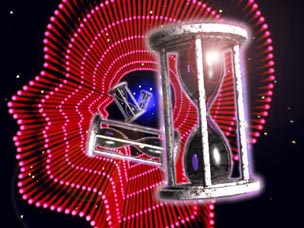
The dream of
time traveling, to
the past or future, is probably as old as the
human imagination. When
H.G. Wells published The Time Machine in 1895,
he called it a
"scientific romance" because no one knew
whether time travel was
possible.
A mere 10 years later, Albert Einstein would
put forth his theory of
special relativity, and part of the question
would be answered--to the
astonishment of many--in the affirmative.
One of Einstein's predictions, now verified by
countless experiments,
is best illustrated by the parable of the
twins. One twin stays home
while the other makes a round-trip voyage into
outer space, traveling
at nearly the speed of light for 10 years, as
measured by the stay at
home twin. When the traveled twin returns, she
finds her sister has
aged 10 years, while she has hardly aged at
all. The traveled twin has
jumped 10 years into the future.
This is the "time-dilation" effect of special
relativity, and although
it is most noticeable when extreme velocities
are involved, it is
happening around us all the time. As we move
relative to each other we
are--all of us--traveling into the future at
different rates. The
differences in these rates are very small,
sure, but they are real.
Time travel into the future is inescapable, a
consequence of the
structure of the universe.
Time traveling to the past, or returning back
from a trip to the
future, is a somewhat more challenging
proposition. Until a few decades
ago, the subject was consigned to science
fiction. In fact, a query
from a first-time science-fiction author
provoked the beginnings of the
first serious and sustained study.
In 1985, astronomer Carl Sagan was working on
the manuscript for his
novel Contact. The book's heroine required
some means of rapid
interstellar transit, and since Sagan wanted
to get the physics right,
he solicited advice from his friend Kip
Thorne, a Caltech theoretical
physicist. Thorne recommended the use of a
"wormhole," a tunnel-like
shortcut through space and time predicted by
Einstein and well known
among science fiction aficionados. Sagan
dutifully incorporated the
suggestion.
That same year, Thorne realized that if you
treated the two mouths of a
wormhole as you treated the twins--keeping one
mouth fixed, moving the
other at a velocity near the speed of light
and then returning it to
the vicinity of the fixed mouth--you could
create a time machine. If
the traveling mouth had been moving for 10
years as measured by the
fixed mouth, then Thorne could jump into the
traveling mouth and emerge
from the fixed mouth 10 years into the past.
Physicists had been skittish on the subject of
time travel, considering
it science fiction. But Thorne's work was
license to take it seriously,
and suddenly there appeared a torrent of
papers, many of which were
published in the most prestigious journals. By
the mid-1990s there were
at least half a dozen ideas for other ways to
twist and fold space-time
like origami.
All this thinking was decidedly
theoretical--no one was building a time
machine in his basement. One reason was that
in most cases, the plans
required a kind of anti-gravity called
negative energy to sustain the
warping of space and time. Negative energy is
difficult, if not
impossible, to produce in the quantities
necessary. Still, the idea of
time travel was getting serious attention.
Naturally, not all that attention was
enthusiastic. Stephen Hawking,
for one, suspected that by some
as-yet-undiscovered mechanism, nature
prohibited traveling back in time. One
sticking point was the
"grandfather paradox": If I traveled back in
time and killed my
grandfather, I could not have been born. But
if I have not been born, I
cannot live to travel back and kill my
grandfather.
The Russian-born physicist Igor Novikov, an
enthusiastic investigator
into the subject of time travel, has suggested
that the paradox doesn't
apply because space-time is probably
self-consistent. That is, I may be
able to travel back in time and somehow become
interwoven into a past
of which I was already a part, but I will not
be able to kill my
grandfather, quite simply because I have not
killed him already.
Novikov has also thought a good deal about the
other time travel
conundrum--the "bootstrap paradox." Suppose I
travel to 2009, find a
design for a zero-emission automobile engine
and return with it to 2008
and patent it. Suppose further that the patent
is developed into the
design that I find in 2009.
The obvious question: Who would have invented
the zero-emission engine?
The answer is, no one would have invented it.
The design would have
been generated quite literally from nothing,
courtesy of a time machine
and (perhaps) a skirting of some
yet-to-be-written intellectual
property laws.
British physicist David Deutsch, invoking the
"many-universe"
interpretation of quantum mechanics, believes
that "pastward" time
travel would require travel to another,
parallel universe--one in which
I could kill my grandfather and in which I
(therefore) would never be
born. Via a time machine, I would have removed
myself from this
universe to take up residence in that one.
The idea has some interesting implications.
Deutsch has suggested that
one reason we have detected no
extraterrestrial civilizations may be
that, using time machines, they have left this
universe, preferring to
live in another.
Metaphysical and philosophical questions
aside, exactly how realistic
is the physics of pastward time travel? Each
of the several schemes for
making a time machine creates a region in
which pastward time travel is
possible and separates it from a region in
which time travel is
impossible. The boundary between these
regions, the "chronology
horizon," has remained a mystery, in part
because its nature depends
upon the characteristics of space-time on the
smallest possible scales.
We have at best a dim understanding of these
scales, and we will not
have a real understanding until we have
developed a full theory of
quantum gravity. This is the holy grail of
theoretical physics: the
so-called "theory of everything" that would
eliminate disparities
between relativity (which explains nature on
very large scales, where
gravity becomes important) and quantum
mechanics (which explains nature
on very small scales, where quantum effects
become important).
Some physicists think the theory of everything
is 10 years away; others
suspect it is a good deal further off. For the
moment, then, the
question of whether time travel is possible
has been put on hold.
The recent (and, no doubt, temporary) decline
of interest in traveling
to the past is welcomed by physicists who
argue that work in less
fanciful areas might yield a greater
intellectual profit. New Zealand
physicist Matt Visser, himself the architect
of a number of theoretical
time machines, calls that attitude overly
cautious and "boring."
More than two decades after Thorne's seminal
work, we still don't know
whether time travel is possible. But one thing
is certain: Even as an
idea, it's anything but boring.
Source: Forbes
http://www.forbes.com/opinions/2008/02/28/time-travel-machine-oped-time08
-cx_dt_0229travel.html
- WHAT THE HELL WAS
THAT DEPARTMENT -
Wisconsin - Where the 'Bear-Wolf' Roams
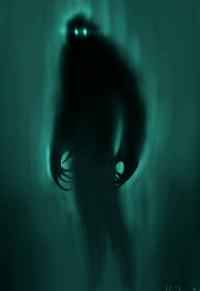
Did it really
happen? Did Brett
Favre retire? What if winter lasts until July?
What was that lurking
near the abandoned barn last night?
Rest easy, Northeastern Wisconsin. Except for
the fact that Favre
really did blow out of Titletown, we haven't
totally lost our marbles.
But if anyone is snapping cell-phone shots of
a Bigfoot-type beast
roaming the northwoods or a Nessy look-a-like
breaking the surface of
Lake Michigan, they're not sharing those
secrets too close to home.
But there are stories. Stories that a shadowy
wolf-like, bear-like
creature seen foraging in the woods wasn't the
average Wisconsin
carnivore.
Those with enough nerve to share the sightings
— or more accurately,
what they think they saw — contact people like
Linda Godfrey, an author
from Elkhorn, who has written several books on
weird goings-on in the
state.
Godfrey spends a majority of her time
traveling the highways and
byways, compiling notes on long lost tales of
pig men in Brussels or
one-eyed horse tormentors in Green Bay-area
stables. Some areas have
richer and more well-traveled tales than
others. That the stories exist
speaks volumes about the human imagination and
that people want to
believe the unbelievable.
"People definitely want to believe that there
are other things out
there," said Godfrey, author of "Weird
Wisconsin" and "Strange
Wisconsin: More Badger State Weirdness."
"I've seen enough from the little bit that
I've been able to explore to
know that there are things you can't explain.
That's why I think you're
seeing a huge interest in ghost hunter shows,
paranormal shows, monster
shows. People really want to believe beyond
what our senses tell us."
Do 'bear-wolves' live among us?
Godfrey, a former reporter who also has
authored several books on
werewolves — not the man-to-wolf
transformational kind — says there's
enough consistency in statewide sightings to
believe a creature in the
wilderness has some 'splainin to do.
"I don't think we're talking about Lon
Chaney-style werewolves. I don't
believe these are humans changing into wolf
form," said Godfrey. "It
does make for a sexier book title.
"It's strange, though, because I've received
probably close to 200
reports just in Wisconsin and Michigan that
have been consistent over
years … and the way people describe its
strength and speed, how it
seems interested in staying out of sight, yet
it stares people down,
sometimes chases them before hiding in cover,
it's a lot of the same.
"Sometimes, it's on two legs, runs away on
four. Or sometimes, its
starts on four and gets up and runs away on
two. Either way, it's
enough for people to say, 'I know what a wolf
looks like. I know a dog
or a bear. That wasn't it.' "
When conducting research, Godfrey said she's a
skeptic. She does
interviews to sniff out hoaxes, while
information that passes the smell
test is used to track patterns of consistency.
And wouldn't you know it? The Wisconsin
werewolf in question has been
to our neck of the woods.
"Green Bay is in a different area, in a sort
of circle that extends to
Wausau back to Green Bay and down to the West
Bend area, the northern
reaches of Milwaukee," she said. "It walks
upright, and while it has a
wolf-like head and ears, the body is bulkier.
It's kind of been dubbed
the 'bear-wolf.'"
"Bear-wolf." Check.
Now what about the legend of the little
one-eyed man?
According to Godfrey's "Strange Wisconsin"
book, the early settlers of
Green Bay included French immigrants who
shared stories about Les
Lutins, tiny one-eyed men who loved to
terrorize horse stables.
Equivalent to goblins, whenever something was
wrong with a horse, Les
Lutins was blamed by owners.
That led Jacques, a Green Bay stableman, to
sleep with his horses one
night, eventually leading to noises and
movements under a plank in the
barn floor, the book said. A tiny cap poked
through a hole, but went
back under when the Cycloptic troublemaker
realized a trap had been set.
"Geez, I've been in this job for 30 years and
I've never heard that one
before," said Mary Jane Herber, historian at
the Brown County Library.
Herber had a meeting of the minds with two
longtime residents and
together they couldn't pin down any pervasive
myths or legends tied to
the area. Locations like Scray's (or Ghost)
Hill, have history in terms
of how they got their names — it stems from an
illusion where cars were
thought to be moving backwards by themselves
up the hill — but she
wasn't aware of anything that had stood the
test of time.
"We all thought the same thing, that because
of the strength of the
churches in this area, both Lutherans and
Catholics, that it probably
wasn't something that was in the norm," Herber
said. "People probably
dismissed (those kinds of stories) right
away."
The same might hold true in Door County.
Jon Jarosh said his area has several ghost
tales, with tours
capitalizing on the paranormal interest. But
no deep woods or lake
creatures to speak of. Just oversized fish.
"There's been a lot said about big fish over
the years, because
obviously there are some decent sized sturgeon
that can swim around
here," said Jarosh, marketing director with
the Door County Chamber of
Commerce. "But no lake creatures. And no
Bigfoot around here. But we'd
love to have him. Or her!"
Abnormalities also exist in Native American
culture, though for the
Oneida Tribe of Indians, it's intrinsic to its
culture, which places
the conversation at a different level.
Stories about the Goat Man, Deer Woman or
shape shifting have
persisted, often as scare tactics, among
various tribes. But they
aren't a matter of myth or legend to many who
grew up with them, said
Brian Doxtator of Oneida.
"For those of us who have been here for years,
it's not something that
brings raised eyebrows," he said.
What they haven't been able to control is how
outside influences have
taken the cultural concepts of Mother Earth
and medicine and presented
them as matters of black magic or witchcraft,
Doxtator said. So
maintaining who they are as tribal members —
and passing that identity
to the younger generation -- is something he'd
like to see persevere.
"For my own self, it's something I try to
practice. Storytelling,"
Doxtator said. "And occasionally I'll get
teased, 'Oh, there's Brian
telling a story again.' But we're all
storytellers. Every one of us.
"But I'm also careful not to feed into the
romanticized version of who
we are as (supernatural) people. It's
integrated in our community, but
it's a small piece of the whole."
Then there's the Hodag.
Perhaps the most well-known Wisconsin-bred
mythical monster, the Hodag
has infused itself with all of Rhinelander.
The green dragon-like beast is used in city
logos and advertising. It's
Rhinelander High School's mascot. A smiling
statue sits out front at
the Chamber of Commerce. It even has its own
Wikipedia page.
"Oh, we embrace it wholeheartedly, all the
businesses, everything,"
said Trisha Gaffron, executive director at the
chamber. "If you ask
locals, you will not get one of them to tell
you the Hodag is not real."
The Hodag story is credited to a logger named
Gene Shepard who had the
community eating out of his hand with the tall
tale of a
seven-foot-long creature roving the desolate
pine forests in the late
1800s. The creation gave him a reputation for
P.T. Barnum levels of
showmanship, and by time he was found out, the
story had cemented
itself as local legend, Gaffron said.
"More than likely he's not around anymore …
but you know, he was very
real back in the day," Gaffron said with a
laugh.
Source: Green-Bay Press-Gazette
http://www.greenbaypressgazette.com/apps/pbcs.dll/article?AID=/20080309/GPG04/
803090747/1250/GPGlife
-
BIGFOOT GETS ALL THE PRESS DEPARTMENT -
Five Monsters You've Never Heard Of

From jungle walruses
to
gigantic worms, these nightmarish creatures are
lurking
BIGFOOT, NESSIE, MOTHMAN, even the dinosaur-like
mokele-mbembe have
become as familiar to us as wooly mammoths and
saber-toothed tigers.
The difference is that the first group might still
be hanging around
out there somewhere.
There are many other crypto-creatures whose names
might not be so
familiar to you, however. And as we go through our
list, you’ll notice
that most of them share a trait in common: they have
been reported by
native tribes in remote, mostly unexplored parts of
the world. This
fact raises these possibilities as to the reality of
their existence:
* They are merely folklore of the
tribespeople.
* They are modern-day creatures
known to science,
but as yet unidentified.
* They are species as yet unknown
to science.
* They are species known to
science but thought to
be extinct, such as creatures from the dinosaur era.
It’s that last possibility that whets our appetite,
of course, because
it certainly is feasible that a prehistoric animal
could have survived
in these dense, tropical areas, protected from human
civilization.
The only way to find out which of these
possibilities is true for any
of these creatures is to mount expeditions to these
isolated pockets of
jungle and swamp and document evidence. Such
expeditions have taken
place, in some cases, but came up empty-handed.
(Naturally, if they
were successful, these creatures wouldn’t be listed
in 5 Monsters You
Never Heard Of – they’d be big news.)
BURU
If it existed at all, this swamp-dwelling monster
may have only
recently died out. Local tribes of the Apa Tani
Valley and the Jiro
Valley in northern Assam, India, claimed to have
seen this large,
crocodile-like monster many times over the years.
They described it as
measuring between 11 and 13 feet long with a long
snout, four limbs,
and 5-foot-long tail. Unlike a crocodile, however,
the buru did not
have scales, but rather was smooth with blue and
white coloration.
Natives testified that it would occasionally lift
its head out of the
water and let out a bellow that could be heard over
great distances.
After many run-ins with the creature, the natives
deliberately set out
to destroy the creature by draining its swamp
habitat. The last one may
have died sometime in the early 1940s, although some
natives believe it
only retreated underground. An expedition sponsored
by London’s Daily
Mail in 1948 proved fruitless, although it came away
convinced that the
natives were quite sincere in their belief in its
existence.
Cryptozoologist Dr. Karl Shukar, after examining all
the available
evidence, surmised that the buru might have been a
species of giant
lungfish.
DINGONEK
A walrus-like creature in the heart of Africa? Such
is the description
of the dingonek by John Alfred Jordan, an explorer
who actually shot at
this unidentified monster in the River Maggori in
Kenya in 1907. Jordan
claimed this scale-covered creature was a big as 18
feet long and had
reptilian claws, a spotted back, long tail, and a
big head out of which
grew large, curved, walrus-like tusks.
Natives of the area further described it as having a
scorpion-like tail
and reported that it would kill any hippos,
crocodiles, or human
fisherman that dared encroach on its territory.
This sounds like a fantasy creature, but consider
this: At the
Brackfontein Ridge in South Africa is a cave
painting of an unknown
creature that fits the description of the dingonek,
right down to its
walrus-like tusks.
EMELA-NTOUKA
Emela-ntouka literally means “elephant killer,”
aptly named by natives
of the Republic of Congo who have seen this
swamp-dwelling monster
attack and disembowel elephants that cross its path.
The instrument of
this disembowelment is a large, ivory or bone horn
on the animal’s
head, leading to speculation that the emela-ntoouka
might be a
surviving relative of the triceratops or
styracosaurus.
This is a nasty, vicious creature, according to the
natives, who
further described it as having a red-brown color,
massive legs, and the
ability to hide totally submerged beneath the water.
Interestingly, its
attack on elephants seems only to be defensive or
territorial, since
the monsters don’t eat the elephants. They seem to
be plant-eaters.
KONGAMATO
Pterodactyl-like flying monsters are said to have
been sighted in
modern-day Southwestern United States. The kongamato
is the African
version of this dinosaur-era holdover, reportedly
seen in Zambia and
Zimbabwe. Although not as large as pterodactyls
known from fossils – 4-
to 7-foot wingspans compared to as large as 33-foot
wingspans – the
kongamato resembles the prehistoric creature in
virtually every other
respect: a long, tapered jaw filled with sharp
teeth, bat-like
membranous wings, and an overall lizard-like
appearance.
Some researchers think the kongamato could in fact
be a large species
of bat. However, in 1923, explorer Frank Melland
heard of this creature
while traveling through Zambia. Intrigued, he showed
illustrations of a
pterodactyl to the locals, and "every native present
immediately and
unhesitatingly picked out and identified it as a
kongamato."
MINHOCÃO
Let us leave the African continent now and travel to
South America,
where there have been reports not of a dinosaur-like
creature but
(perhaps more disturbingly) of a giant worm.
Witnesses in Uruguay and
southern Brazil describe the monster as looking like
a gigantic
armor-plated slug. Imagine a black slug as big as 14
feet long with a
snout like a pig’s and two tentacles poking out of
its head. Some
reports have it as long as 75 feet! Normally living
underground, the
minhocão occasionally surfaces, leaving deep
trenched in its
wake.
Most scientists think its length has been
exaggerated and suggest that
the minhocão could either be: an unknown species of
horned
viper; a glyptodont, a giant relative of the
armadillo, thought to be
extinct; or an outsized caecilian, a subterranean
worm-like amphibian.
Those are good guesses. But we know what the
minhocão really is.
Like the other creatures profiled in this article,
they are the living,
breathing monsters that hide in the damp, dark
shadowy corners of our
planet.
Source: Paranormal.about.com
http://paranormal.about.com/od/othercreatures/a/aa031008.htm
-
HE'S A LIVE WIRE DEPARTMENT -
'Magnetic Boy'
Keeps
Crashing Computers

An American schoolboy appears to have developed a
special talent – for
crashing computers. Joseph Falciatano, a 12-year-old
from New York
state, has taken on the moniker 'Magneto Man' after
continuously
causing his school's computers to stop working.
Experts are baffled as to why the youngster has the
bizarre power but
believe it is down to the unique amount of static
electricity he
produces. In order to keep their IT suite running, the
school put a
grounding pad under Joe and gave him an anti-static
wrist-strap.
"Another student could use a computer, and it would be
fine. But if Joe
was on it, weird things started to happen," Marie
Yerdon, computer lab
teacher at Lura Sharp Elementary School in Pulaski, told
local
newspaper The Post-Standard.
"I think there's something in his body chemistry,
something in his
makeup that causes the computers to go haywire."
The school also emailed his parents to inform them of
their son's
capacity to stop electrical devices – a tendency they
also see at home.
Joe also had problems with his Xbox console, and was
'forced' to
upgrade to an Xbox 360 as a result of the issues the
wired controller
on the older model was having.
The Xbox would freeze whenever Joe tried to use it and
even with the
wireless controller used on the Xbox 360 he has to sit
across the room
from the games console.
Joe's special powers also almost resulted in the
cancellation of an
awards ceremony for his fellow students and their
parents after a slide
show of the fifth-grade schoolchildren began to crash
because he was
too near.
"They were going through the slide show, and my son was
sitting
quietly," Joe's dad, also called Joe, said.
"And all of a sudden, the music started to slow down and
get distorted,
and the pictures were messing up, stuff like that. As
parents, we
didn't think anything of it, until two teachers sprinted
over to get to
Joe. We're thinking, 'What did he do? Did he do
something wrong?'
"The teachers moved him away to the side of the room,
and then the
slide show started going again, and the computer went
back up to speed.
And then we realized that it wasn't that Joe was
misbehaving. They were
moving him away from the hard drive so the computer
wouldn't crash."
Static experts have been called in to monitor the
youngster but have
been so far unable to pinpoint the cause, admitting that
his
super-static ability remains a "mystery".
Source: Metro
http://www.metro.co.uk/weird/article.html?in_article_id=115434&in_page_id=2
- FOR THE KIDDIES DEPARTMENT -
Easter Eggs, Bunnies, Peeps: Easter Traditions
Explained

From decorating eggs to eating Peeps, USA TODAY explains
the origins of modern-day Easter traditions.
Easter egg
The symbol of the egg may have origins in pagan rituals
celebrating the spring season. The religious symbolism
is the resurrection of Jesus.
Decorating eggs for Easter dates back to at least the
13th century, according to the History channel. Dying
eggs red symbolized the blood of Christ.
The Easter egg is also a byproduct of Lent, as many
families would give up eggs during those fast days,
which end with Easter.
Easter bunny
One theory is the Easter bunny also comes from pagan
rites of spring, brought to the U.S. by 18th-century
German settlers in Pennsylvania.
These settlers prepared nests for the bunny in their
gardens or barns and waited for Easter Eve for the
rabbit, known as "Oschter Haws," to lay eggs, according
to Christianity Today.
Peeps
The marshmallow candies now synonymous with Easter have
their origins in a candy company created by Russian
immigrant Sam Born. Born first opened a factory in the
early 20th century in Brooklyn before moving his
operations to Bethlehem (yes, Bethlehem!), Penn., in
1932.
Starting in the 1950s, a marshmallow Peep was made by
hand-squeezing marshmallow through pastry tubes,
according to the candy's website, Just Born.
Each year, 2 billion Peeps are produced, with 75% made
specifically for Easter, according to an e-mail from the
company.
According to Just Born, nearly a third of Peeps products
purchased aren't consumed, but are used for other
purposes, like Peeps dioramas.
White House Easter Egg Roll
Since 1878, when Rutherford B. Hayes was in office,
American presidents have hosted the "egg roll" on the
White Houses' South Lawn, according to the White House
Historical Association website.
The tradition of egg rolling actually began around the
Capitol building. Starting in the 1870s, Washingtonians
converged there to celebrate Easter, but the brightly
colored eggs made a mess of the lawn. In 1876, President
Ulysses Grant signed a law that banned egg rollers on
Capitol grounds, according to the website.
Source: USA Today
http://www.usatoday.com/story/news/nation-now/2014/04/18/easter-traditions-explained/7865171/
Sign up today for Bizarre Bazaar and Conspiracy Journal
Magazines
|





